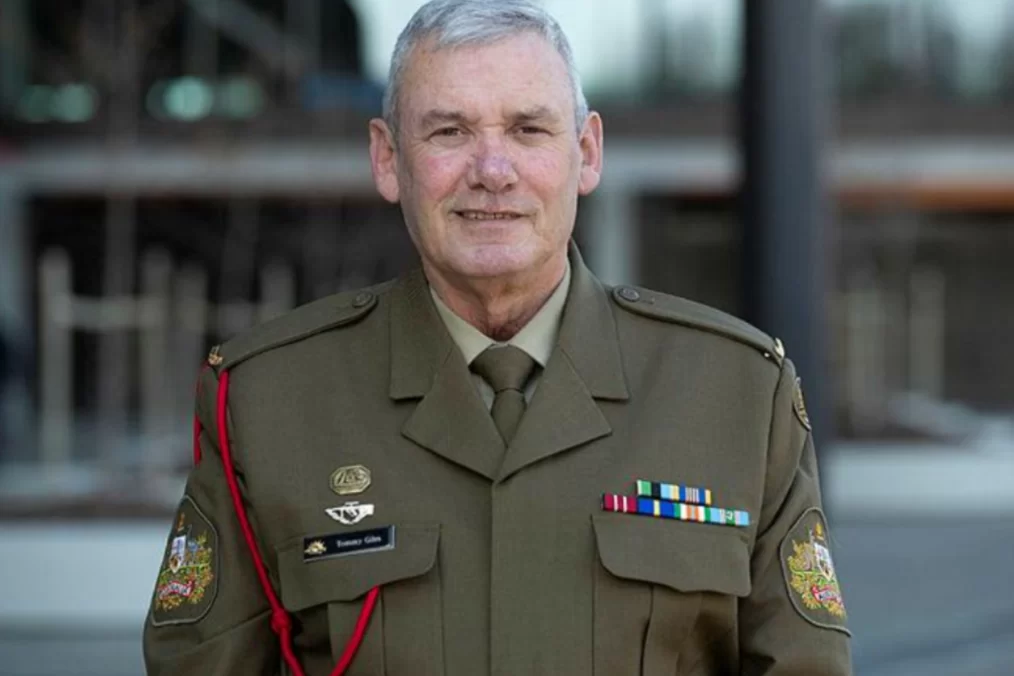By Julian Bajkowski
Photo: Australian Army Warrant Officer Class One Tommy Giles at Brindabella Park, Canberra. (Defence)
There’s nothing like a proper labour shortage to broaden the minds of human resources folk and make them actually earn their keep. In the Australian Defence Force (ADF), that means hanging onto the old guard for a few years longer, as the army tries to find sufficient numbers of recruits.
As large and institutional employers across Australia try to retain more mature personnel for longer (because there is no younger and cheaper staff to be hired), Australia’s military is biting the bullet by tapping into the retirement queue to maintain its ranks.
Like many militaries, the ADF has strict mandatory age limits, at both ends of the life cycle. For Australia’s permanent forces, compulsory retirement kicks in at 60 years of age, while for Reserves, it’s 65 years.
Those wanting to stay in the job serving their country can “transition” into the Reserves rather than just shift into the civilian realm. Known as ServeOn, it’s a well-established option but one that Defence is now very enthusiastically pushing to those tempted by the rod and reel, the open road or the private sector.
The Army’s 2024 retiree recruitment poster boy is Warrant Officer Class One (WO1) Tommy Giles, who Defence says turned 60 in 2022 “and needed to retire from full-time service.”
“Having provided more than 40 years of service across the Irish Army and the Australian Army, WO1 Giles was keen to continue serving on his own terms,” Defence said. Well, after 40 years of taking orders, the appeal of doing things on your own terms is pretty logical.
This is where the stealth cunning of Defence marketers comes into play. It’s fair to say that while there are great opportunities and challenges during a career in uniform, the idea of “flexible work” – which most of the Australian Public Service just picked up as a workplace right – ain’t really a viable thing for the modern-day warfighter.
Or is it?
Defence says that through ServeOn, Giles “was able to find a flexible role that allowed him to remain connected with Army and embrace semi-retirement.”
“It’s brilliant,” Giles said. “It’s a great experience working flexibly. I’ve been able to maintain a sense of purpose and it also provides a social aspect where I’m able to keep in touch with people I’ve worked with over the years.”
Defence said Giles has “the flexibility to serve three days a week during business hours” and that this downshifting allows him “to look after his grandchildren each Monday and spend more time with his wife, Sandra.”
“When the grandkids come over on a Monday, Sandra and I really enjoy taking them to the local park and seeing them run around,” Giles said, with Defence adding he “has enjoyed making the most of his semi-retirement by reading novels and watching plenty of sport.”
Having worked full time since he was 15 (ah, those were the days) Giles reckons he’s now “enjoying the freedom to choose what I do, when I do it, and how I want to spend my day.”
Embracing the motto of ‘you can’t be what you can’t see’, Giles is spreading the word to let ADF members of a similar age to him know there are options when that time comes.
“Giles believes it’s worthwhile to reach out to find a flexible service role,” Defence said.
“People may not be aware of all the roles that are available,” Giles said. “It’s not too late to find something and stay connected.”
He’s invested too. Defence’s semi-retirement missive reveals WO1 Giles serves as a “separations manager”, which kind of figures.
Did we mention the flexibility?



How many times have we heard the stories of blokes after 15 or 20 years and have asked to be transferred to wherever so they can be with their families or that they have had enough of being shoved all over the country, and the army says ‘No, sorry we can’t do that.” And so the bloke pulls the the pin and down the shute goes 20 years of experience .